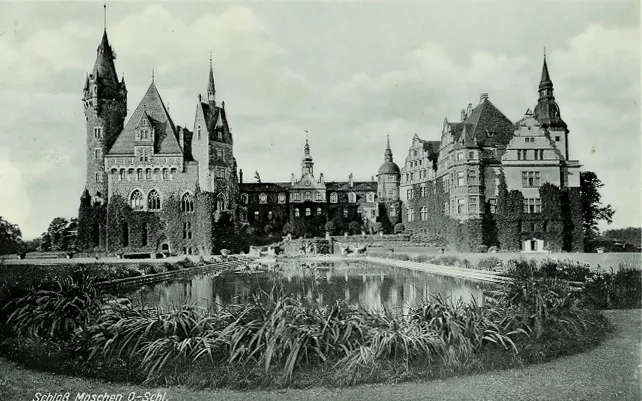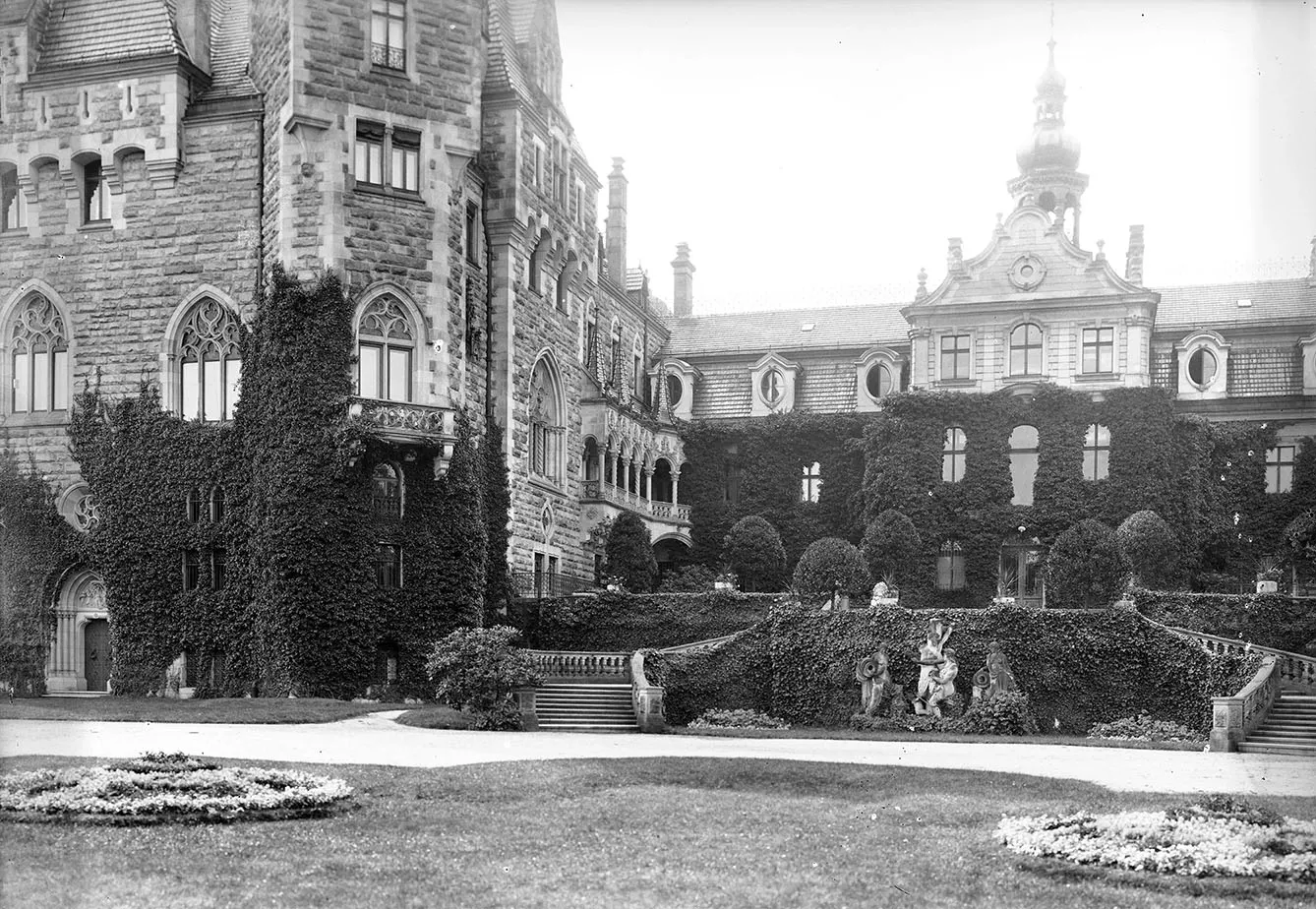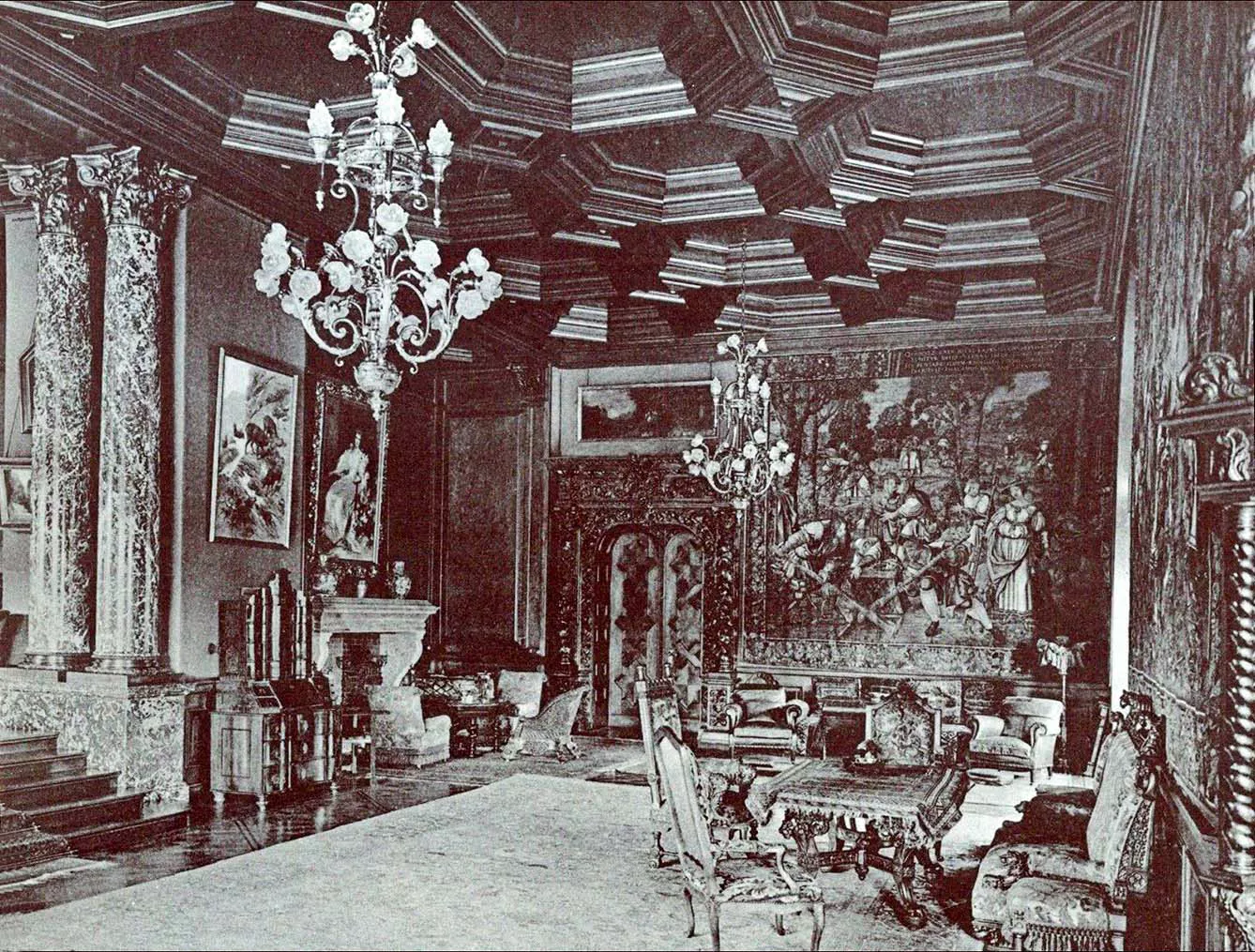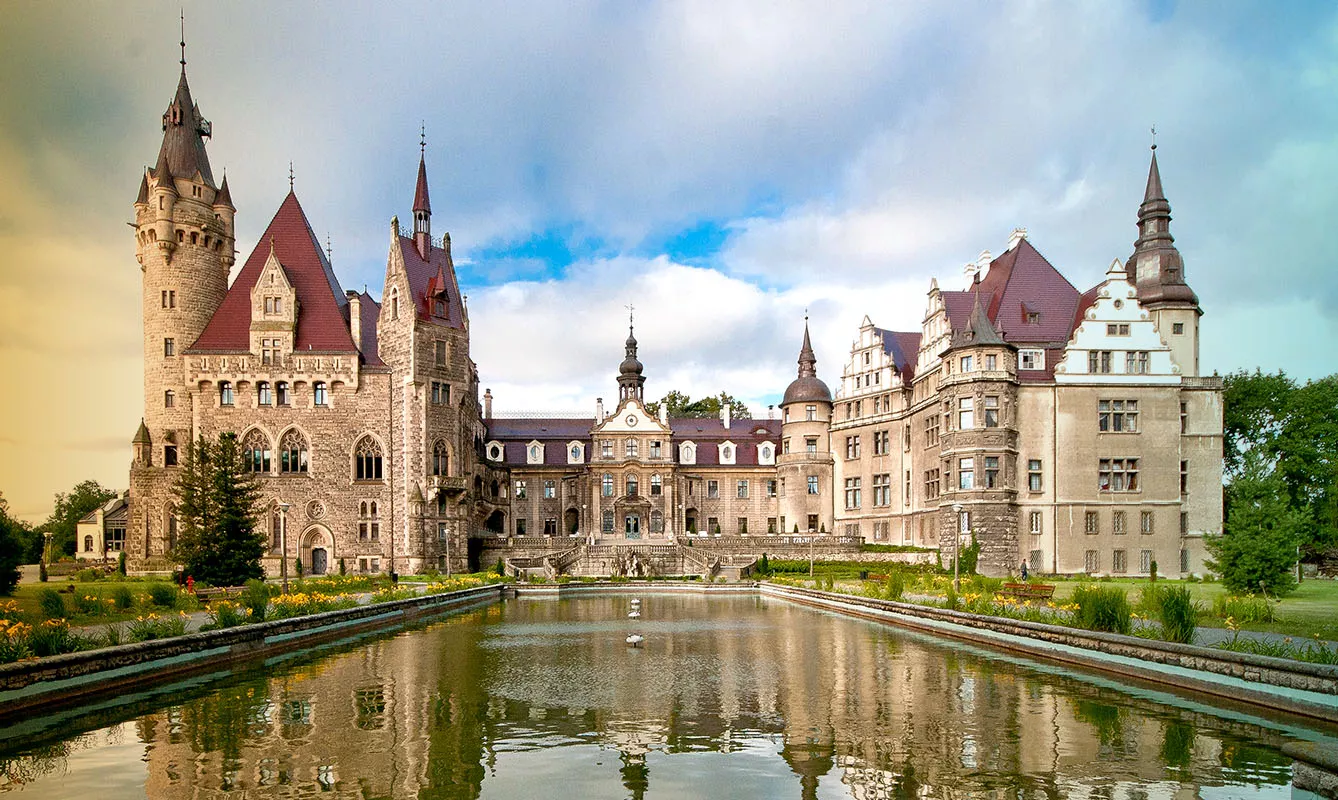Let’s travel back in time to the 14th century, when the Moschi family decide to settle in the area of today’s Moszna (Opolskie Voivodeship). Over the coming centuries, their village, together with their family mansion, changed hands, ultimately purchased by the wealthy Tiele-Winckler family in 1866. When in 1895, German Emperor Wilhelm the Second (who is said to have visited the palace!) made Franz Hubert von Tiele-Winckler a duke, everyone expects with anticipation how the village (and the palace) are bound to grow.



Boring? It may seem so at first glance. However, the final result gives the contemporary visitors to the site a decisive ‘WOW’ effect. But first things first. Sometimes, in order to create something unique, you need to scrap everything you had created so far. Such was the case of the Moszna palace. In 1896 a huge fire destroyed the vast majority of the baroque building.
Moszna Castle: a phoenix from the ashes
The unplanned incident resulted in major restoration works that, apart from rebuilding the original structure, added a neo-gothic wing (1896-1900). And once you have a neo-gothic wing, why not add a neo-renaissance one (1911-1912)? Then the cherry on the top – wonderful gardens with a fountain, and voila! A true fairy-tale palace!
There are no true castles and palaces without legends and riddles, and Moszna Palace has some of its own. Among the most well-known ones is the legend of the ghost of an unhappy woman who visits the site. The spirit is allegedly that of a governess who fell in love with the Duke, who broke her heart, so she took her own life.
This legend fits nicely in with the… human skeleton visible in one of the towers. It is said to have belonged to the same woman. The Duke would not grant the governess her last wish to be buried in her homeland – England. With her soul not at peace, her earthly remains somehow found their way to the top of the tower and are still waiting for someone to bury them in the land of Chaucer. Brr! A bit morbid even for a legend, don’t you think?
A family of tax evaders
Speaking of the towers, it is said the palace has exactly 99 towers. Why 99 and not a round 100? The missing tower is allegedly no mistake. Skipping its construction was to be a way for the family to avoid having to pay for the upkeep of one military garrison. I am sure anyone would love to meet their accountants! It is also claimed that the palace has 365 rooms, which corresponds with the number of days in the year.




After the Second World War, just as much as prior to the Tiele-Winckler ownership, the palace frequently changed hands. Owned by the communist state, it even housed a center for treating neurosis (which, by the way, is a good direction to try and solve the skeleton riddle, just FYI). In 2013 the palace was more or less restored to its original function and is open to visitors as well as… guests!
Yes, you can spend the night in one of its luxurious interiors. All year-round – and especially during the summer months – it offers many attractions to those who decide to take the shortish ride from Opole to see for themselves how this gorgeous palace, fit for any Disney princess, is so unlike any other in Poland. It stole my heart – see if it can steal yours!







